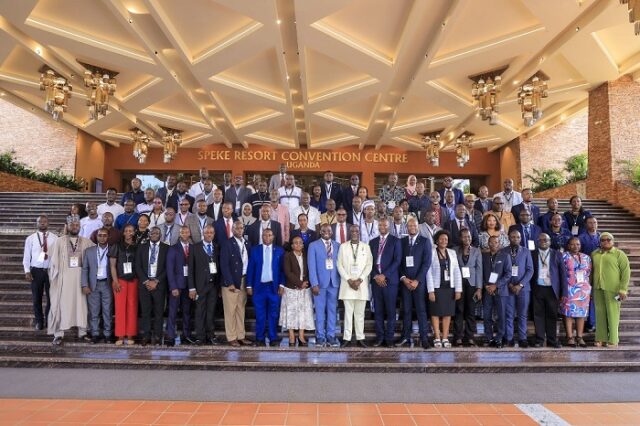
Another challenge raised was drone visibility in controlled airspace. During Nigeria’s trial, Miri revealed, air traffic controllers at the approach unit could not track the drone because it lacked ADS-B or any broadcasting identification.

Engineer Selzing Miri, National President, National Association of Air Traffic Engineers (NAAE), stands between two delegates at the 15th IFATSEA Africa Regional Meeting in Uganda. To his right is NAAE’s General Secretary, Engineer Shuaibu Muhammadu. Miri spoke on drone flight calibration support and highlighted regulatory and operational challenges facing its adoption.




















